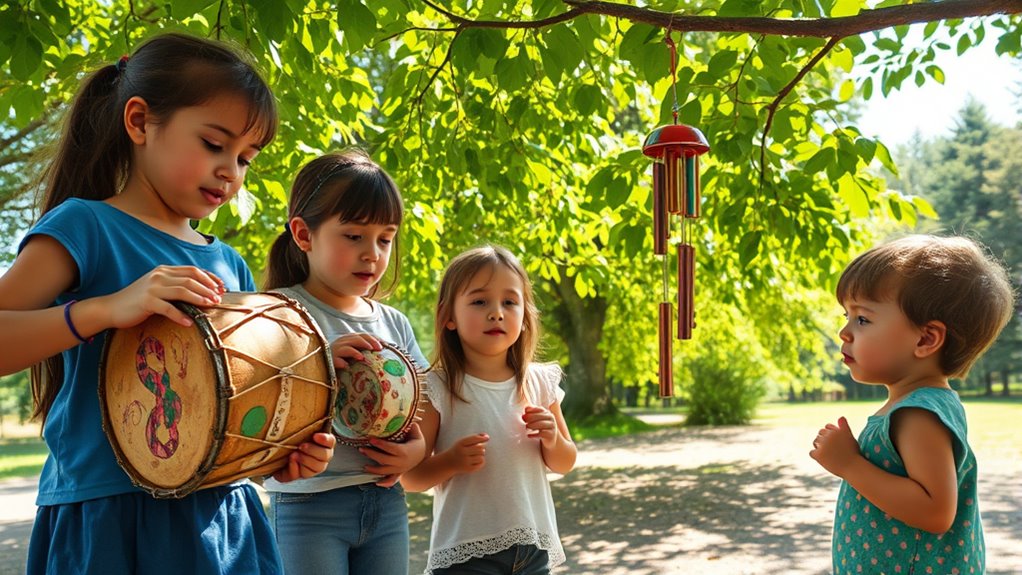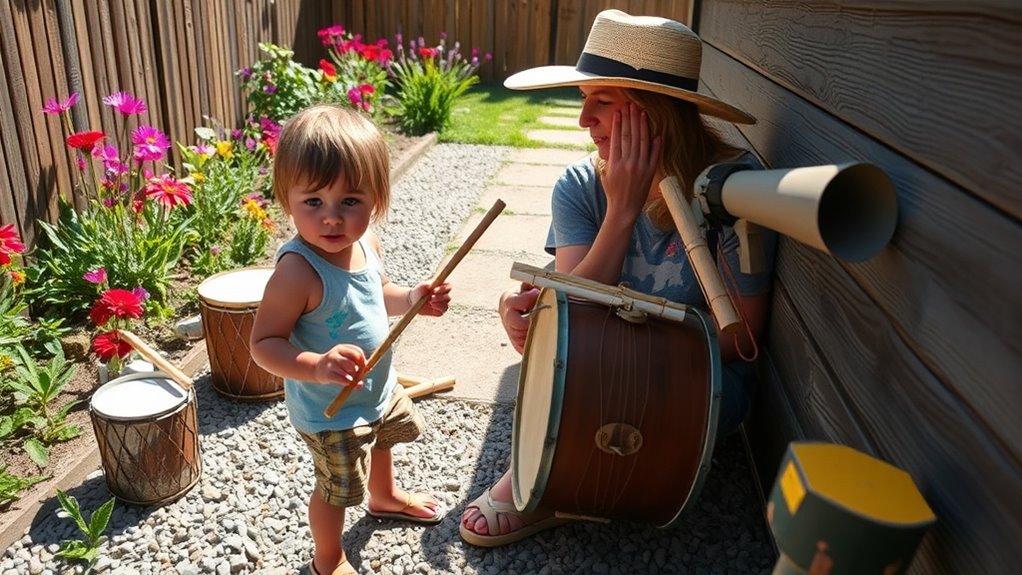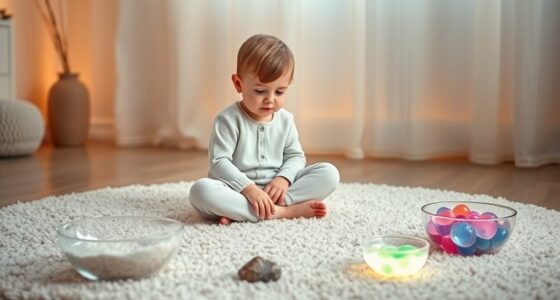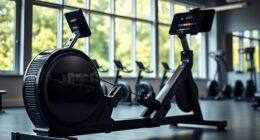Sound exploration invites you to create homemade instruments from everyday objects like jars and pans, turning ordinary items into musical tools. Going on listening walks helps you notice layers of sounds around you—birds, traffic, leaves—and how they change with your surroundings. These activities sharpen your auditory perception, deepen your connection to the sonic environment, and spark your imagination. Keep exploring, and you’ll discover even more ways to enjoy and understand the fascinating world of sound.
Key Takeaways
- Creating homemade instruments with everyday objects enhances understanding of sound wave properties and acoustic concepts.
- Listening walks develop auditory perception by focusing on environmental sounds and their variations over time and distance.
- Engaging in sound exploration activities stimulates musical creativity and encourages active experimentation with sound production.
- Using physical properties of objects, like shape and material, influences the sounds they produce during instrument creation.
- Attentive listening transforms passive hearing into an interactive experience, fostering curiosity about the sonic world around us.

Have you ever wondered what lies behind the sounds we hear every day? When you pay close attention, you’ll realize that each noise tells a story, and through sound exploration, you can open a world of musical creativity. Your auditory perception is more powerful than you might think, capable of distinguishing subtle differences in tone, pitch, and rhythm. By actively engaging with your environment, you can turn ordinary objects into homemade instruments that produce unique sounds. From tapping on glass jars filled with different levels of water to drumming on pots and pans, you can experiment with how various materials and shapes influence sound. These simple creations allow you to explore the physical properties of sound waves and develop your understanding of acoustic concepts in a hands-on way. Understanding sound wave properties can deepen your appreciation of how different objects produce distinct tones and patterns. Listening walks are another fantastic way to sharpen your auditory perception. As you stroll through your neighborhood or a nearby park, focus on the layers of sounds around you—birds chirping, leaves rustling, distant voices, or the hum of traffic. Pay attention to how different sounds change depending on your distance or the time of day. This practice not only heightens your awareness but also fuels your musical imagination, inspiring melodies or rhythms based on what you hear. You might notice a pattern in the chirping of birds or the rhythm of footsteps, which could serve as a foundation for your own musical improvisation. The more attentive you are during these walks, the more your senses will develop, helping you perceive sounds with greater clarity and depth.
Creating homemade instruments and setting out on listening walks are accessible ways to deepen your connection to sound. They encourage you to experiment, listen actively, and appreciate the richness of everyday noises. These activities boost your musical creativity by inspiring new ideas and ways to produce sounds, while also enhancing your auditory perception—your ability to notice and interpret the sonic details all around you. As you continue exploring, you’ll find that sound is not just something to hear passively but a vibrant, interactive experience. Whether tapping out rhythms on a makeshift drum or tuning into the subtle shifts in nature’s symphony, you’re expanding your understanding of how sound shapes your environment and your imagination. This journey into sound exploration can transform ordinary moments into extraordinary musical adventures, opening your ears and mind to a universe of endless auditory possibilities.
Frequently Asked Questions
How Can I Ensure Homemade Instruments Are Safe for Children?
To guarantee your homemade instruments are safe for children, start with safety testing by checking for sharp edges or small parts that could pose choking hazards. Use only non-toxic materials, like food-grade paints, glue, and natural objects. Supervise children during play, and regularly inspect instruments for wear or damage. By following these steps, you create a safe environment where children can explore sounds confidently and enjoyably.
What Are the Best Locations for Listening Walks?
You should choose urban parks and coastal trails for listening walks because they offer diverse sounds and environments. Urban parks provide a mix of natural and city noises, while coastal trails let you listen to waves, seabirds, and wind. These locations help children focus on different auditory stimuli, enhancing their listening skills. Always pick safe, accessible spots that encourage exploration and curiosity, making the experience enjoyable and educational.
How Do I Record and Analyze the Sounds I Discover?
Did you know that analyzing sound can improve your listening skills by up to 25%? To record and analyze sounds, use your phone or a recording device, then explore audio editing apps to trim and enhance your clips. For deeper insights, try sound visualization tools that turn your recordings into visual patterns, helping you identify different sound elements and understand their structure better.
Can Sound Exploration Be Adapted for Visually Impaired Individuals?
Yes, sound exploration can be adapted for visually impaired individuals by using tactile exploration and adaptive techniques. You can incorporate textured instruments, Braille labels, and audio cues to enhance the experience. Encourage them to explore sounds through touch, listening, and movement. These methods allow for a rich, engaging auditory experience, making sound exploration accessible and enjoyable for everyone regardless of sight.
What Materials Are Most Effective for Creating Unique Homemade Instruments?
You should use innovative materials like recycled metals, rubber, and glass to create unique homemade instruments. Sustainable options, such as bamboo, cardboard, and natural fibers, also work well and add interesting sounds. Experimenting with everyday objects like bottles, cans, and rubber bands can produce diverse tones. Focus on combining these materials creatively to develop instruments that offer rich, varied sounds, making your sound exploration truly distinctive and eco-friendly.
Conclusion
Now that you’ve explored homemade instruments and taken listening walks, you’ve unfastened a new way to experience your surroundings. Every sound becomes a chance for discovery and creativity. So, why not keep this curiosity alive? Challenge yourself to find new sounds every day and invent your own instruments along the way. After all, isn’t the world around you full of endless musical surprises just waiting to be heard?










